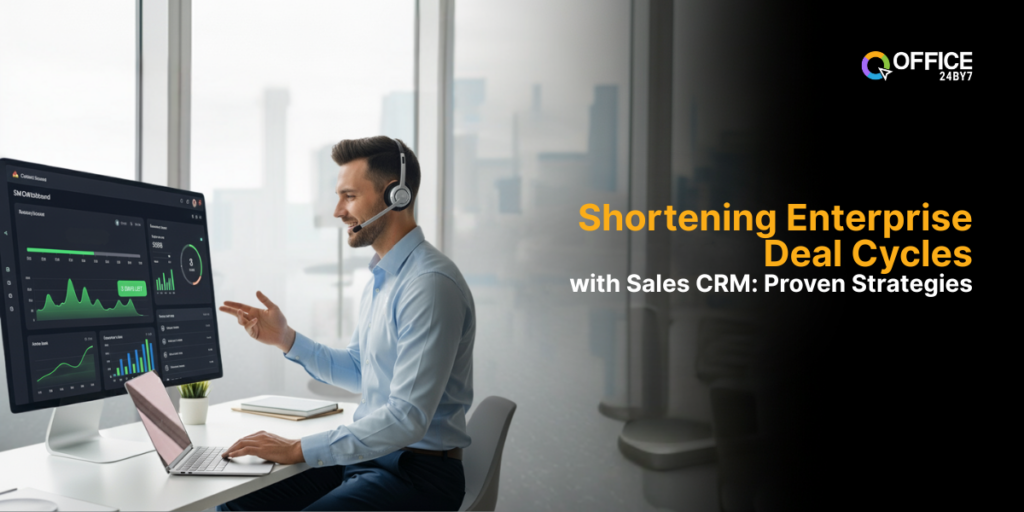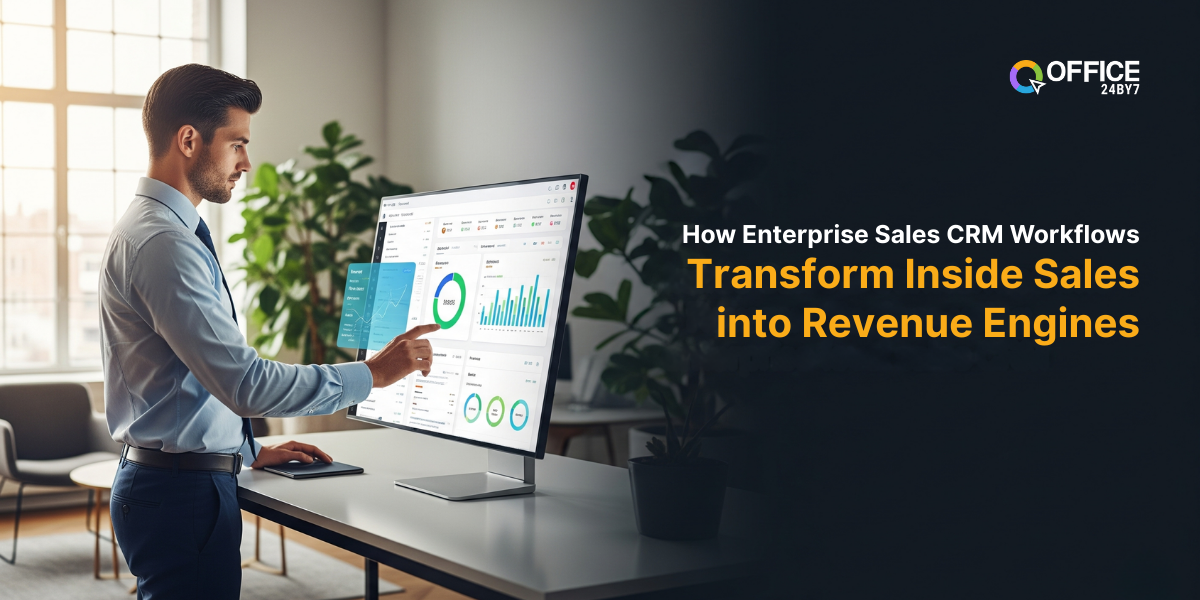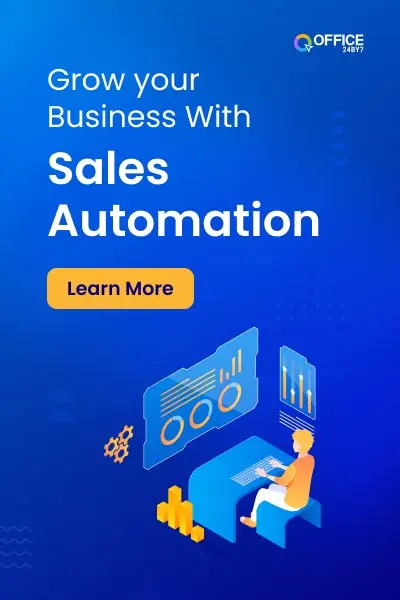
Not sure if this blog on Sales CRM contains quality information?
Try our 1-minute short audio summary to decide. 🎧
Enterprise selling is becoming more challenging. In the last five years, a recent McKinsey study indicates that B2B sales cycles have increased by 25 %, and the buying committees in many cases comprise 610 decision-makers. Additional stakeholders translate to additional approvals, additional delays, and additional risks of deals halting. To negotiate this complex environment, a sales CRM can be instrumental in facilitating communication and monitoring the development of the deals with many decision-makers in it.
To CFOs and sales leaders, it is not just a time issue, but a revenue leak. Each additional week of the cycle increases the cost of acquisition, ties up working capital, and provides room through which competitors may win the account. This is why companies are currently looking to CRM workflows to restore predictability and efficiency to deal-making.
In contrast to disjointed tools that generate additional workloads, cohesive CRM aligns teams, automates manual processes, and maintains deals in motion. Moreover, when combined with Omnichannel Marketing, these workflows not only reduce timelines but also ensure that teams actively pursue prospects through all channels.
The Challenge of Long Enterprise Sales Cycles Without Sales CRM
Long cycles are not a result of one bottleneck alone but instead a result of a series of inefficiencies compounding each other. Businesses that are working with spreadsheets, breaking email chains, and unlinked calling platforms find it hard to keep pace.
Bottlenecks in Lead Management
Sales teams often fail to centralize workflows on leads. In many cases, agents leave leads unattended for days, while in other cases, several agents follow up on the same lead. This confuses the sales team and the customer.
Fortunately, a modern call center solution built into a sales CRM corrects this by directing leads to the appropriate agent in real time, thus enabling prompt response. Industry studies show that faster speed-to-lead alone enhances conversion rates.
Data Silos and Inconsistent Processes
Managers do not have a single view when one system stores calls, another is in charge of emails, and a third one is in charge of pipeline data. Decisions are made with incomplete information, and agents waste time seeking context.
However, the combination of cloud telephony services and CRM will also make all interactions, calls, messages, and meetings logged in a single platform. This enhances visibility and also eradicates duplication.
Limited Forecasting and Revenue Predictability
Paperwork tends to bloat pipes and conceal dangers. Leaders find frozen deals too late, and this makes forecasting unreliable.
Furthermore, having task management and CRM analytics integrated, the enterprise can monitor the engagement rates in real-time, identify the weak areas earlier, and allocate resources more efficiently.
How Enterprise Sales CRM Workflows Redefine Inside Sales
In fact, the CRM workflows of sales are not only concerned with substituting tools, but also with the transformation of the team’s functioning. They make sure that deals continue to progress by automating the repetitive functions and introducing acuity in the process.
Distributed Lead Capture and Distribution in Sales CRM
For instance, the workflow automatically directs leads to appropriate agents, whether by geography, product line, or availability, rather than doing it manually. This minimizes response time.
Similarly, integrating CRM processes with click-to-call software options will enable agents to answer the phone in real-time and at the same time document all calls. The faster the outreach, the more wins.
Automated Follow-Up and Engagement Patterns
Deals die when the follow-ups are tardy. CRM workflows address this through scheduled reminders that can be in the form of calls, emails, or meetings. Interaction occurs repeatedly, without having to memorize.
Moreover, enterprises can also use scalable tools such as voice broadcasting campaigns to reach large numbers of prospects simultaneously, without losing their personalization. Agents then concentrate on the hottest leads, and the system deals with repetitive tasks.
Focalized Task and Activity Management using Sales CRM
To managers, real-time visibility is not negotiable. CRM processes automatically record all activities, thereby ensuring that leaders understand who is working, where there are bottlenecks, and which deals are under threat.
This openness saves on administration and achieves accountability. With a ticketing management system, the enterprises could also make sure that customer problems do not derail active opportunities.
Advanced Analytics for Smarter Sales CRM Decisions
Any activity within the CRM is fed into analytics dashboards. Leaders do not wait to get end-of-month reports; they can watch deal velocity, pipeline health, and forecast accuracy in real-time.
Teams can automate follow-up data with tools such as a WhatsApp Bot, ensuring that no deal goes cold because of human oversight.
Driving Predictable Revenue Through Enterprise Sales CRM Workflows
The goal is not to have fewer cycles, but to ensure predictable revenue. The two largest metrics that sales CRM workflows directly affect are deal speed and win rates.
Reducing Sales Cycle Length using Sales CRM
Automated workflows accelerate all lead assignments and contract approvals. They schedule activities more quickly, send notifications automatically, and ensure timely follow-ups.
This means that businesses get to actualize revenue sooner. Even a five-day cycle cut on high-ticket B2B deals can be a substantial revenue enhancement in a quarter.
Growing Conversion Rates at every Funnel
Consistency in engagement reduces drop-offs. Under CRM workflows, no lead is left behind, and no chance is missed on account of slow action.
Outbound Marketing campaigns embedded in the CRM also make the prospects the focus of the nurture at each step to enhance conversions throughout the funnel.
A Marketing Automation Tool
makes all the difference!

Calculating Sales CRM Transformation ROI
Technology adoption is not about the tools; it is about the ROI. The perception of CRM workflows as a cost-saving tactic can support implementation at the boardroom level.
Connecting Workflows of CRM to CAC and CLTV
Efficient workflows lower CAC. Automated engagement minimizes the amount of wasted effort, and streamlined routing guarantees leads convert quickly.
At the same time, consistent engagement increases CLTV. Enterprises can maintain long-term customer connections and assess campaign success using virtual number services.
Scaling Revenue Without Linear Cost Growth
The logic used traditionally was to increase sales by getting more agents. As workflows with CRM, enterprises grow without commensurate cost spikes. Routine work is taken care of by automation as agents concentrate on high-value discussions.
Sales CRM platforms such as Office24by7 allow this scalability. Up/Cross-selling automation increases deal sizes and positively impacts margins without lengthening the cycle.
Making Deal Cycles Growth Engines
Enterprise sales cycles do not have to be dragged continuously. Structured workflows enable businesses to reduce wait times, better prediction, and develop a predictable revenue generator.
This can be done with the help of CRM by Office24by7, as it offers the ability to automate, create analytics, and scale a business within a single solution. Shorter cycles, more conversions, and confident forecasting are no longer the goals of ambition; they are realities.
CFOs and sales leaders now need to take action. They will be able to introduce CRM not as a cost center but as the center of a sustainable growth strategy. Discover how Office24by7’s sales CRM can shorten deal cycles and boost your sales today.
Call us at +91-7097171717 or email sales@office24by7.com and transform your growth strategy today!



